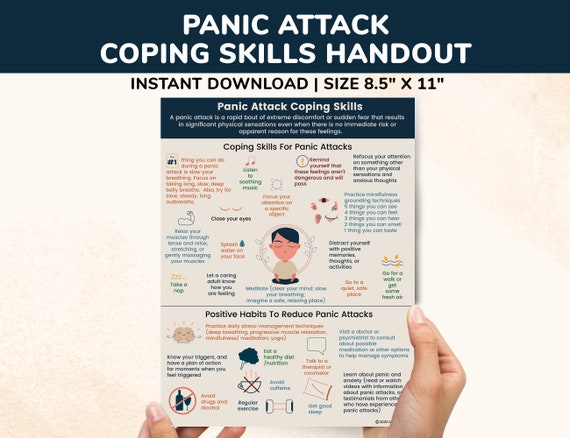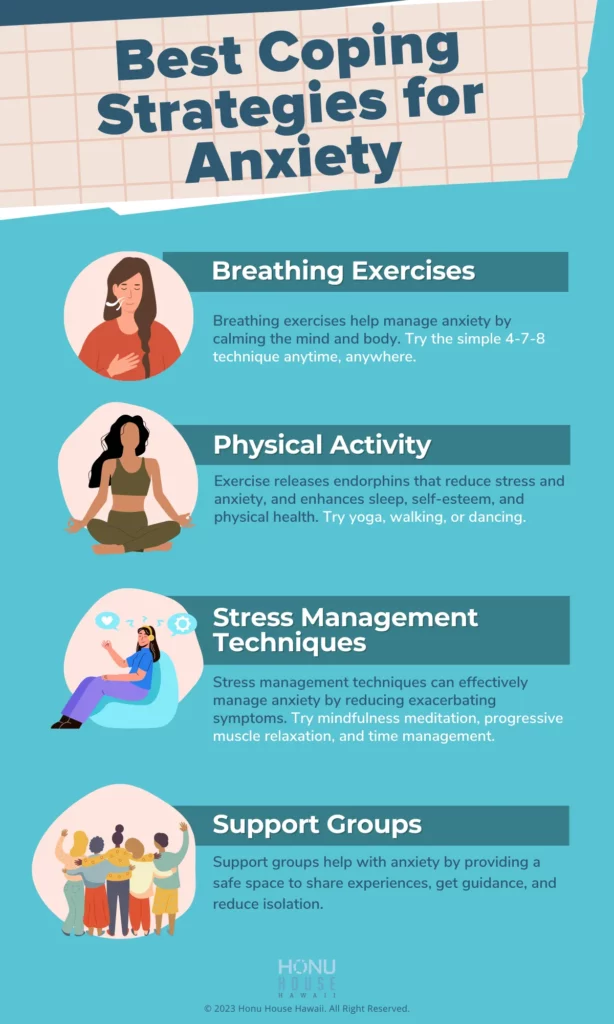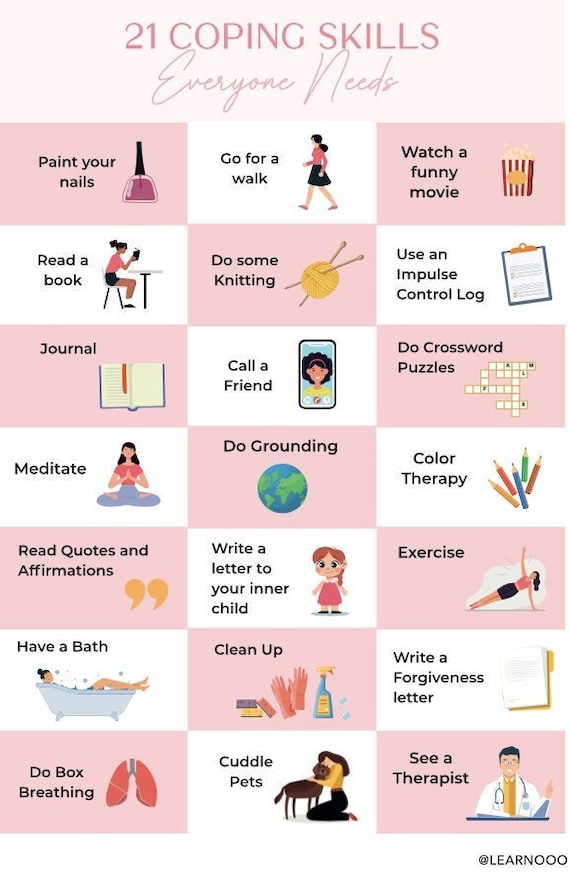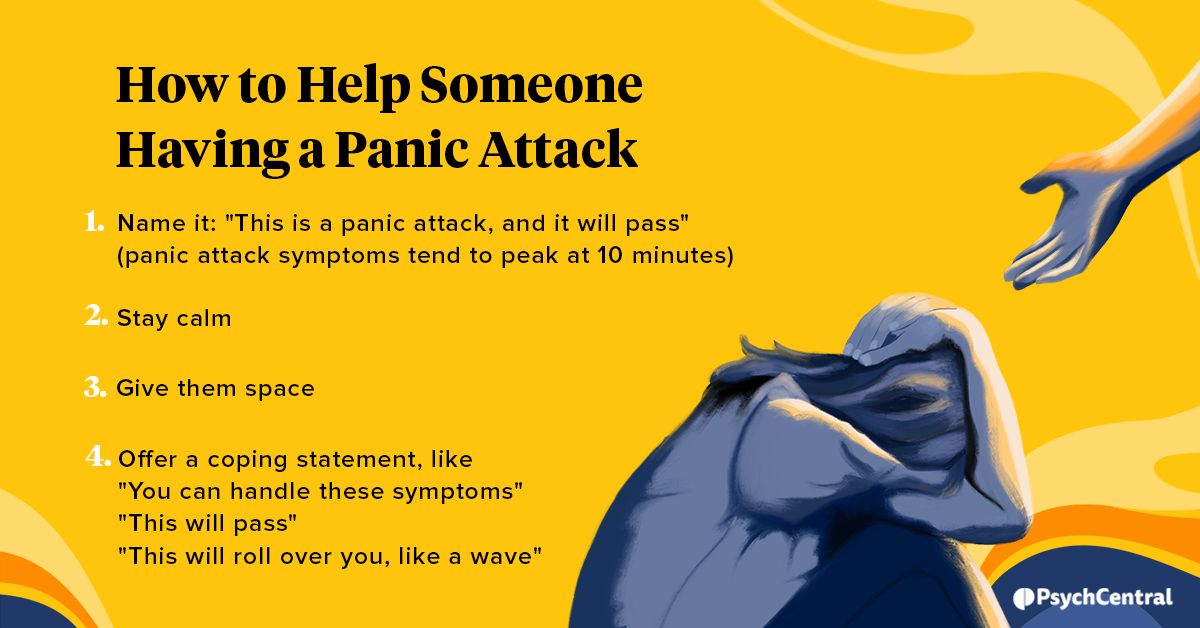Dive into our expert tips and tricks for taming panic attacks fast, so you can regain control and find peace.
Table of Contents
- Introduction: What Is a Panic Attack?
- Recognize the Signs: Know Your Worry Monster
- Super Breathing Powers: Calm Your Storm
- Picture Peace: Relax Your Mind
- The Magic of Movement: Exercise Away Anxiety
- Speak Out the Scary: Share Your Feelings
- The Toolbox of Tricks: Quick Coping Tools
- Prepare and Practice: Be Your Own Superhero
- The Science of Settling Down: How It Works
- Summarizing the Super Strategies
- Frequently Asked Questions (FAQs)
Introduction: What Is a Panic Attack?
Have you ever felt really scared or worried, like your heart is pounding fast, and you can’t catch your breath? That intense feeling of fear and stress is what we call a panic attack. It’s like your body’s worry alarm going off all at once!
Understanding Panic Attacks
During a panic attack, you might feel like everything is out of control. Your hands might get sweaty, your stomach might feel funny, and it can be hard to think clearly. It’s like your body is sending out an SOS signal that causes these scary feelings.
Recognize the Signs: Know Your Worry Monster
In the world of feelings, there’s a sneaky creature called the Worry Monster. This monster loves to play tricks on us and sometimes makes us feel scared or nervous for no reason at all. But don’t worry, we can learn how to spot this rascally monster before it causes a big commotion. Let’s dive in and learn how to recognize the signs of the Worry Monster!
Spotting the Signals
Imagine you’re at a fun party, playing games and laughing with your friends. Suddenly, out of nowhere, you start feeling your heart racing like it wants to win a race all by itself. Your palms get sweaty, your stomach feels like a roller coaster, and you can’t catch your breath. These can be signs that the Worry Monster is trying to stir up trouble.
The Worry Monster loves to make us feel like everything is going wrong, even when everything is okay. It loves to bring up scary thoughts and make our bodies feel funny. But if we pay close attention, we can catch the Worry Monster when it first starts knocking on our door. By recognizing these early signs, we can stop the monster before it gets too wild.
Super Breathing Powers: Calm Your Storm
In times of feeling overwhelmed or scared, did you know that there are superpowers right inside you that can help calm the storm in your mind? These powers have the ability to slow down the hurricane of emotions whirling within you and help bring peace to your thoughts. Let’s discover these incredible powers together!

Image courtesy of www.etsy.com · In stock via Google Images
The Big Balloon Technique
Pretend for a moment that you have a big, colorful balloon in front of you. Now, take a deep breath in through your nose, filling up your belly like you’re blowing up that balloon with air. Imagine the balloon getting bigger and bigger with each breath you take. Then, slowly exhale through your mouth, watching the balloon deflate. Feel the tension melting away as you repeat this a few times. Doesn’t it feel like magic?
Five-Second Breaths
Here’s another cool trick you can try: the five-second breaths game plan. Breathe in deeply for five seconds, feeling the air fill your lungs, hold it in for another five seconds, and breathe out slowly for five more. As you do this, focus on the count and the rhythm of your breaths. You’ll notice how your body and mind start to relax with each breath, soothing the storm inside you.
Picture Peace: Relax Your Mind
When you start to feel overwhelmed and anxious, it can be hard to calm down your mind. But there’s a helpful trick that can make a big difference – it’s called mindfulness. This means focusing on the present moment and imagining calm and peaceful places or moments. Let’s explore how picturing peace in your mind can help you manage those moments of panic.
Your Happy Hideaway
Close your eyes and imagine a place where you feel completely relaxed and safe. It could be a sunny beach with gentle waves, a cozy cabin in the woods, or even your favorite room at home. Picture every detail – the colors, the sounds, the smells. Take deep breaths as you transport yourself to this happy hideaway. Allow the stress to melt away as you immerse yourself in this peaceful place in your mind.
By creating a mental oasis where you feel at peace, you can escape the chaos of a panic attack and find calmness within yourself. Remember, your thoughts are powerful, and by picturing peace, you can bring a sense of tranquility to your mind even in the midst of anxiety.
The Magic of Movement: Exercise Away Anxiety
Anxiety can make us feel jittery and uneasy, like there’s a whirlwind of worries swirling around in our minds. But did you know that getting up and moving our bodies can help calm those stormy feelings down?

Image courtesy of honuhousehawaii.com via Google Images
Dance It Out!
When anxiety starts creeping in, one fun and effective way to shake it off is by dancing! Turn on your favorite music, crank up the volume, and let your body move to the beat. Dancing not only gets your heart pumping and releases feel-good chemicals in your brain, but it also helps distract you from those anxious thoughts swirling around.
Whether it’s twirling around in your room, busting a move in the living room, or showing off your dance skills outside, moving your body can help release tension and boost your mood. So, the next time you feel anxiety knocking on your door, put on some music and dance it out!
Speak Out the Scary: Share Your Feelings
When you feel overwhelmed by scary thoughts or feelings during a panic attack, remember that you are not alone. It’s essential to talk to someone you trust about what you are going through. Sharing your feelings can help you feel supported and less alone.
Find a Trust Buddy
Choose a person you trust, like a parent, sibling, friend, or teacher, to confide in when you’re feeling anxious or panicked. Having someone who listens to you without judgment can make a big difference. Remember, it’s okay to ask for help when you need it. You don’t have to go through a panic attack alone.
The Toolbox of Tricks: Quick Coping Tools
When you start feeling a panic attack coming on, it’s helpful to have some quick coping tools at your fingertips. These strategies can help you manage your feelings of anxiety and stress before they escalate. Let’s explore some simple tricks to add to your toolbox.

Image courtesy of www.etsy.com · In stock via Google Images
Distraction Doodles
Drawing or doodling can be a fantastic distraction technique when you feel overwhelmed by panic. Grab a piece of paper and let your creativity flow. Focusing on creating something can shift your mind away from the anxious thoughts swirling in your head.
Magic Music
Listening to soothing music or your favorite tunes can work wonders when you’re feeling anxious. Music has a way of calming the mind and providing a welcome distraction from the intensity of a panic attack. Create a playlist of your go-to feel-good songs for moments like these.
Prepare and Practice: Be Your Own Superhero
Tackling anxiety and panic attacks can be challenging, but preparing yourself and practicing coping strategies can empower you to be your own superhero. By being proactive in managing your feelings, you can build resilience and face panic attacks with confidence.
Regular Relaxation Routine
It’s crucial to practice breathing exercises and mindfulness regularly, even when you’re not in the midst of a panic attack. By incorporating these practices into your daily routine, you can strengthen your ability to stay calm and focused when faced with anxiety.
| Strategy | Description |
|---|---|
| Deep Breathing | Take slow, deep breaths to calm your nervous system and reduce symptoms of a panic attack. |
| Progressive Muscle Relaxation | Tense and relax different muscle groups in your body to release tension and anxiety. |
| Grounding Techniques | Focus on your surroundings using your senses to bring yourself back to the present moment. |
| Positive Affirmations | Repeat positive statements to yourself to counteract negative thoughts and emotions. |
| Guided Imagery | Visualize a calming scene or scenario to distract yourself from panic symptoms. |
| Stay Hydrated | Drink water to stay hydrated and help regulate your body’s stress response. |
Take a few minutes each day to center yourself, focus on your breath, and visualize a peaceful place or moment. By making these relaxation techniques a habit, you’ll be better equipped to navigate challenging situations and keep panic attacks at bay.
Your Body’s Panic Button
Understanding how your body responds to stress is key to managing panic attacks effectively. When we experience anxiety, our body goes into a heightened state of alert, triggering physical and emotional reactions.
By practicing breathing exercises and mindfulness, you can ‘turn off’ the alarm signal that triggers a panic attack. These coping strategies help activate your body’s relaxation response, calming your mind and body and enabling you to regain control.
The Science of Settling Down: How It Works
When we talk about settling down during a panic attack, it’s essential to understand how our body and mind work together. Let’s dive into the science behind these coping strategies and how they help in calming the storm inside us.

Image courtesy of psychcentral.com via Google Images
Your Body’s Panic Button
Imagine your body as a big alarm system that goes off when it senses danger, just like a fire alarm in your house. When you’re scared or worried, your body releases chemicals that make your heart beat faster, your breathing get quicker, and your muscles tense up. This is your body’s way of preparing to fight or run away from danger, even if the danger is not real.
Now, when a panic attack hits, this alarm system goes into overdrive, sounding the alarm even when there is no real threat. This is why you might feel like you can’t catch your breath, your heart is racing, and everything feels out of control.
But here’s where the magic of coping strategies comes in. Techniques like deep breathing, mindfulness, and distraction help to send a signal back to your body that everything is okay. By focusing on your breath, imagining peaceful places, or doing something fun like dancing or drawing, you are telling your body that there is no need to panic.
These coping strategies act as the off switch to your body’s panic button, gradually helping you regain control and calmness. It’s like telling your body, “Hey, it’s all good, no need to be so worried.” And slowly but surely, the storm inside you starts to settle down, and you can breathe a sigh of relief.
Summarizing the Super Strategies
Throughout this article, we have discussed various super strategies to help kids cope with panic attacks. Let’s summarize these powerful tools that can assist you in managing those overwhelming feelings:
Understanding Panic Attacks
In the midst of a panic attack, you might experience rapid heartbeat, sweating, trembling, and a sense of impending doom. Thankfully, recognizing these signs can help you take control.
Super Breathing Powers: Calm Your Storm
Imagine inflating a big balloon as you take deep breaths to calm yourself. The five-second breath technique—breathing in for five seconds, holding for five seconds, and then exhaling for five seconds—can also work wonders in easing your panic.
Picture Peace: Relax Your Mind
Creating a happy hideaway in your mind, a place of serenity that you can visit when needed, can bring you immense peace during a panic attack.
The Magic of Movement: Exercise Away Anxiety
When feeling anxious, turn up your favorite tunes and dance your worries away. Physical activity can be an excellent stress reliever.
Speak Out the Scary: Share Your Feelings
Don’t keep your panic attacks to yourself. Find a trust buddy, someone who will listen and offer support during those tough moments.
The Toolbox of Tricks: Quick Coping Tools
Engage in distraction doodles or listen to magic music to redirect your thoughts from panic to a calmer state.
Prepare and Practice: Be Your Own Superhero
To be well-equipped to battle panic attacks, practice breathing exercises and mindfulness techniques regularly. Developing these coping skills during calm times will help you better manage stressful moments.
The Science of Settling Down: How It Works
Understanding that these strategies can deactivate your body’s stress responses helps in gaining control. By ‘turning off’ the panic alarm, you can effectively manage your panic attacks.
Frequently Asked Questions (FAQs)
What is a panic attack?
A panic attack is when your body’s alarm system goes off even when there is no real danger. It can make you feel like you’re in great danger, even though you’re actually safe. During a panic attack, you may have a racing heart, trouble breathing, sweating, feeling dizzy or lightheaded, and feeling like you’re losing control. It can be a scary experience, but remember that it’s your body’s way of reacting to stress in an intense way.
Can kids have panic attacks too?
Yes, kids can have panic attacks too. It’s important to know that you’re not alone in this experience. Sometimes, when we feel overwhelmed or stressed, our bodies can react with a panic attack. It’s completely normal, and there are ways to cope with it and feel better. You can always seek help and support from trusted adults if you’re going through this.
How can I tell my parents or teachers about my panic attacks?
Talking about your feelings and experiences is crucial when it comes to panic attacks. It’s okay to share what you’re going through with your parents or teachers. They care about you and want to help you feel better. You can start by finding a calm moment to talk to them and explain how you’re feeling during a panic attack. They can support you, help you find coping strategies, or connect you with someone who can assist you further.





